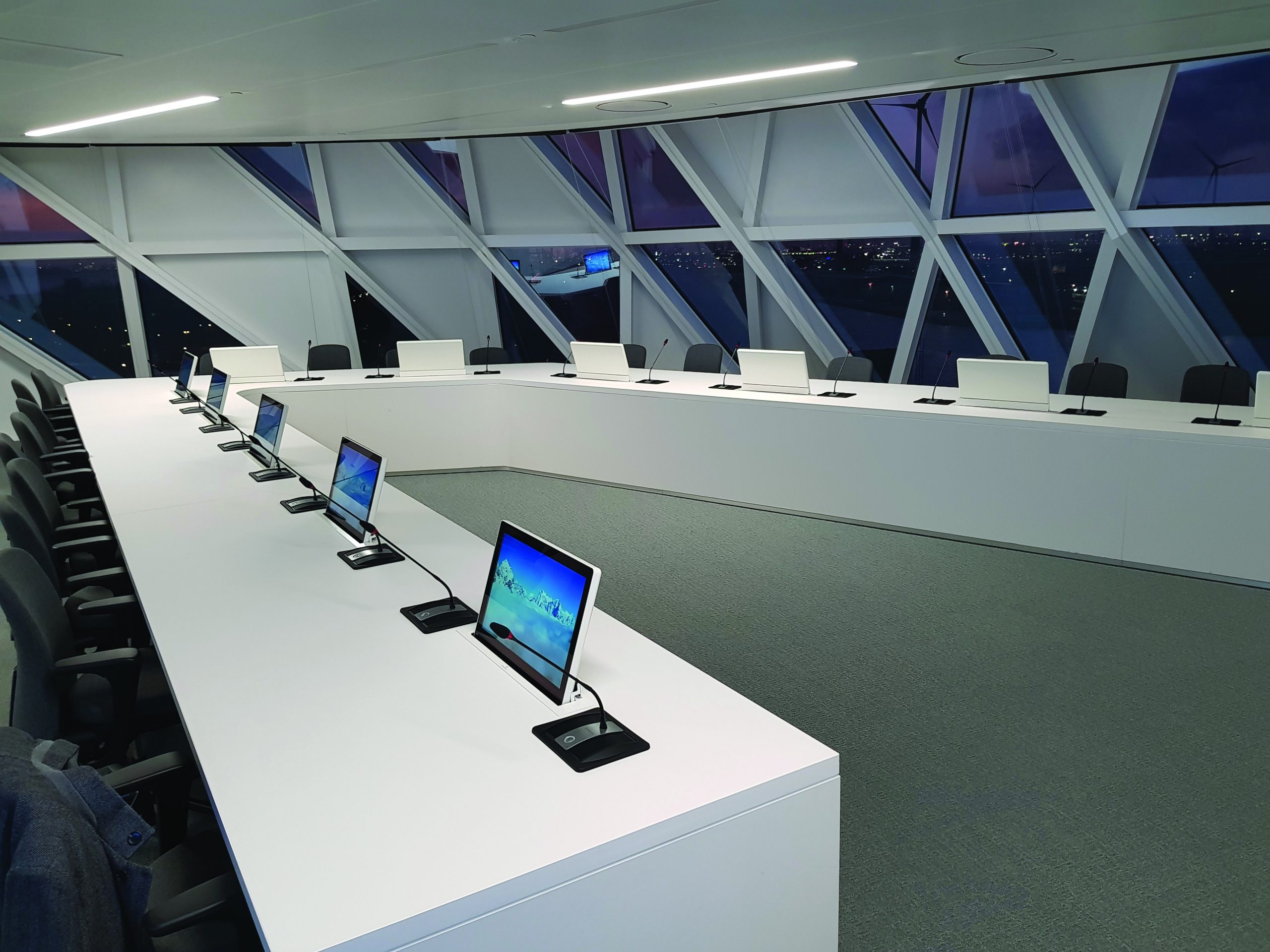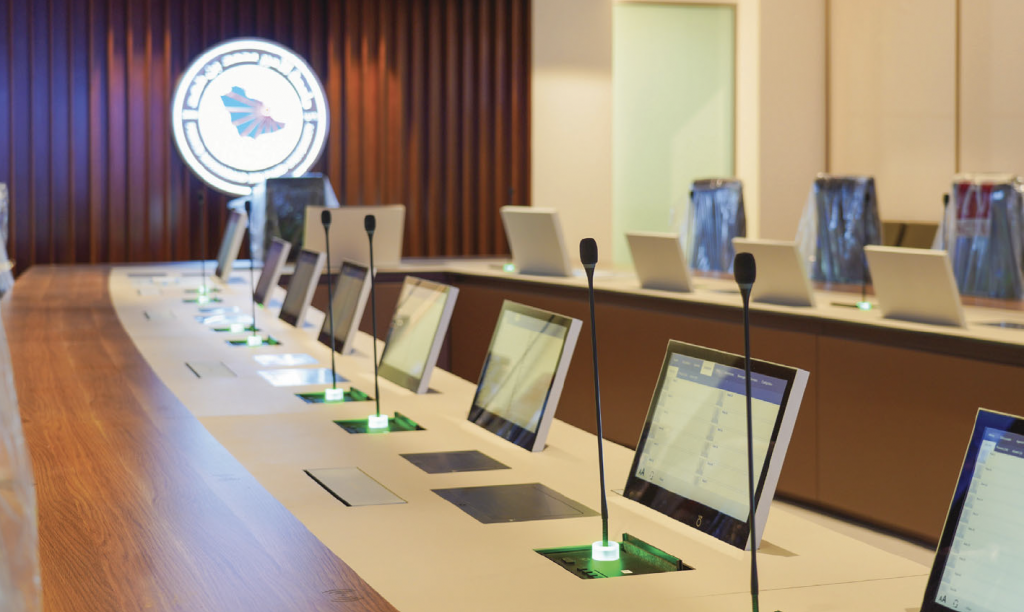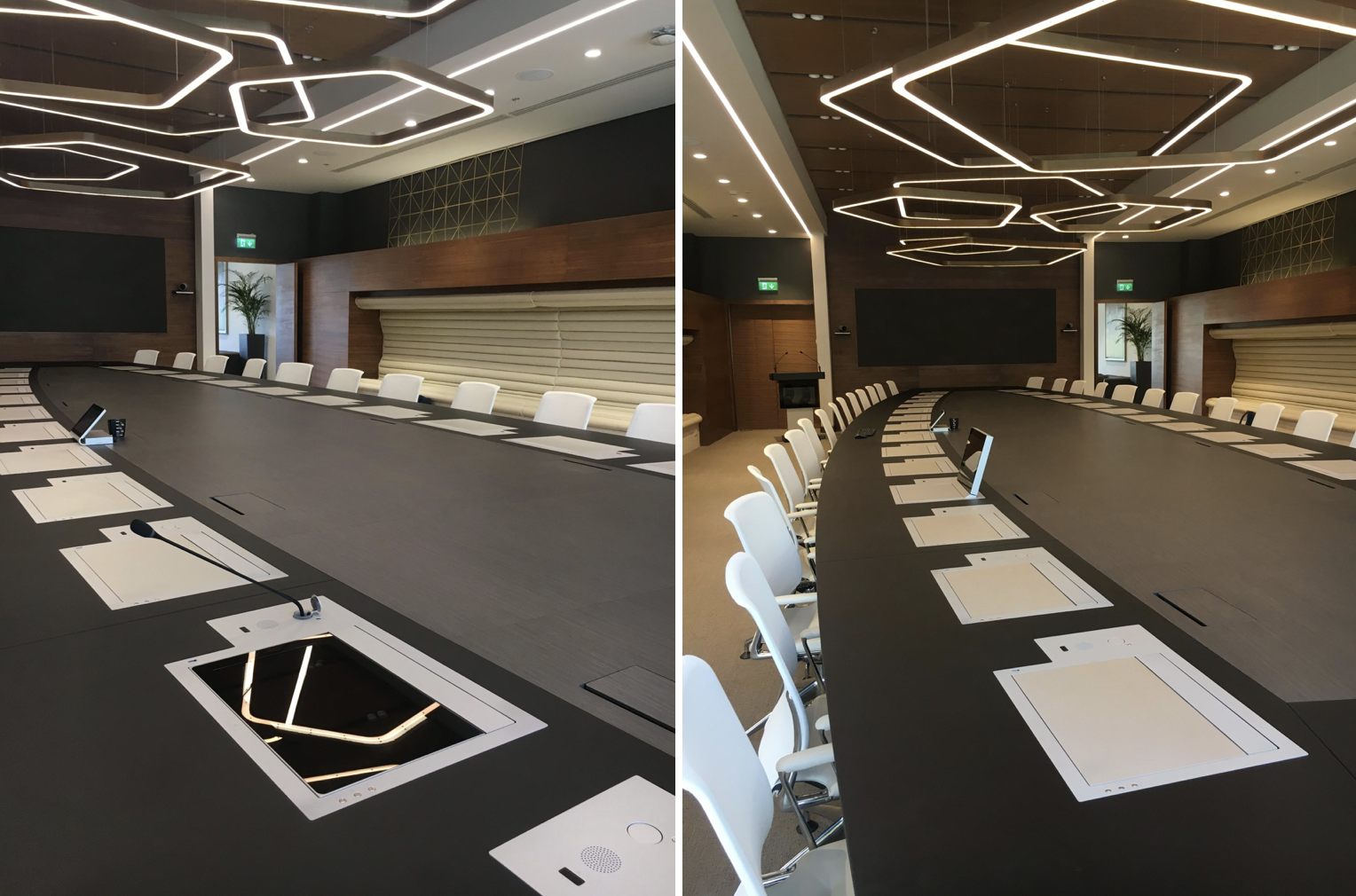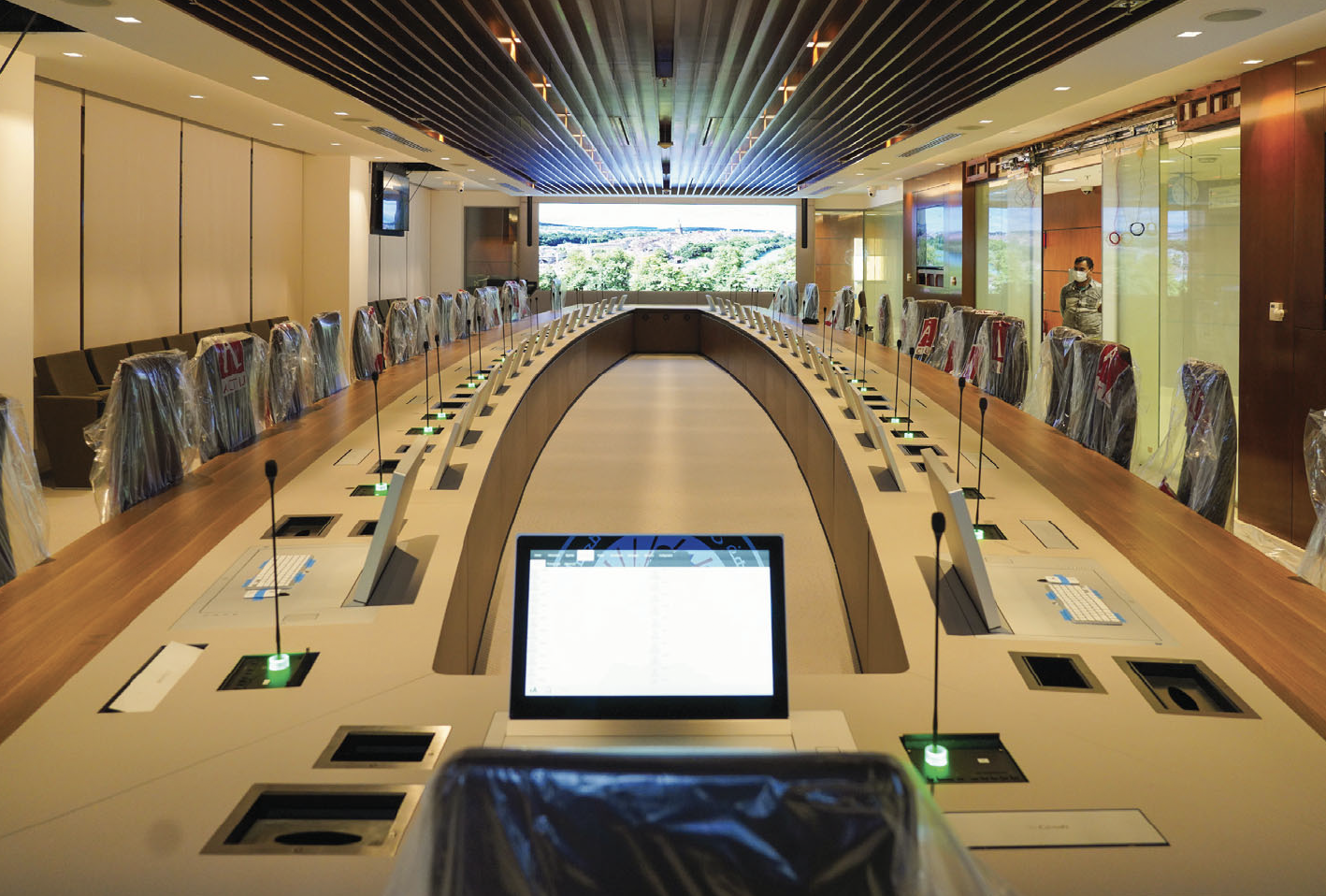The Meeting Room in the Post Covid era

The meeting room, traditionally, has been one of the most important places in a company’s office. It is a multi-functional space which can be used as a place to gather, a space where creativity can flow, a focal point to initiate and build relationships with customers, suppliers, employees and shareholders, and of course for strategic decision-making and communicating corporate values.
But with the outbreak of Covid-19, the vast majority of employees were forced to work from home, with countless meeting rooms left eerily empty for over 12 months. The pandemic led to a dramatic increase in the use of videoconferencing technologies, and an attempt to redefine the use of office space. But the truth is that no one knows for sure what workplaces will look like in the post-pandemic period.
Some recent studies such as “Working from home: Too much of a good thing?” (by Kristian Bherens, Sergey Kichko and Jacques-François Thisse, published by the Centre for Political and Economic Research), reveal that teleworking and the downsizing of office space is not a cure-all. The researchers have studied how different intensities of teleworking affect companies’ overall efficiency, as well as its impact on the economy as a whole. They conclude that telework is an ambiguous blessing: the relationship between telework and productivity or GDP is an “inverted U-shape” and increases income disparity; excessive reduction of workspaces can be detrimental to all and exacerbate economic inequality.
 While there are undoubtedly many benefits of teleworking such as reduced commuting time and costs, and most importantly, the security of being able to avoid direct contact with people, there are also some significant costs that are difficult to quantify, such as the deterioration of the so-called “agglomeration economy”, which is defined by the clustering of companies, and the benefits and profits they experience by such closeness, allowing their employees to interact both spontaneously and informally.
While there are undoubtedly many benefits of teleworking such as reduced commuting time and costs, and most importantly, the security of being able to avoid direct contact with people, there are also some significant costs that are difficult to quantify, such as the deterioration of the so-called “agglomeration economy”, which is defined by the clustering of companies, and the benefits and profits they experience by such closeness, allowing their employees to interact both spontaneously and informally.
Indeed, National Geographic reports: “So many people are having similar experiences that this phenomenon has become known as “Zoom fatigue”, (although this fatigue also applies if you use Google Hangouts, Skype, FaceTime or any other video-calling interface). The unprecedented surge in their use in the wake of the pandemic set in motion an unofficial social experiment and proved something that has always been true on a human scale: virtual interactions can be tough on the brain.”
Humans communicate even when not speaking. For example, in a face-to-face conversation, the brain focuses partly on the words that are spoken, but it also extracts meaning from dozens of non-verbal signals, such as whether a person is facing away or turned slightly, whether they are fidgeting as you speak, or whether they inhale quickly just before interrupting you. (Are they bored, nervous, agitated?) These signals paint a complete picture of what’s being conveyed and what response is expected from the other speaker. Humans evolved as social animals, so for most of us, picking up on these signals is natural, takes little conscious effort to analyse, and importantly can lay the foundation for emotional intimacy.
 But a normal video call affects these ingrained abilities and requires a constant and intense focus on the words. If we can only see a person’s face and shoulders, the possibility of seeing hand gestures or other body language is lost. And if the video quality is poor, there is zero chance of deducing anything from the minimal facial expressions, which results in frustration and a two-dimensional experience.
But a normal video call affects these ingrained abilities and requires a constant and intense focus on the words. If we can only see a person’s face and shoulders, the possibility of seeing hand gestures or other body language is lost. And if the video quality is poor, there is zero chance of deducing anything from the minimal facial expressions, which results in frustration and a two-dimensional experience.
Another problem is that multiple-person screens increase fatigue. The gallery view strains the brain’s central vision and forces it to decode so many people at the same time that you end up getting nothing meaningful from anyone, not even the person speaking.
This causes problems, such as group video call becoming less collaborative and more fragmented, conversations in which only two people speak at the same time while the others listen in, (especially true for more timid participants, that would voice their opinions in a face-to-face meeting, but would keep quite in group videos). As each participant uses an audio stream and is aware of the other voices, it is impossible to have simultaneous conversations. If you only see one speaker at a time, you cannot recognise the behaviour of the non-active participants, something you would be able to see with normal peripheral version.
For some people, the prolonged attention creates a strange feeling that you are exhausted, with “fuzzy” brain, and have achieved nothing. The brain feels overwhelmed with too much information and stimuli, while it concentrates on looking for non-verbal cues that can’t be found.
 But in general, video calls have made conversations possible, and develop in ways that would have been impossible a few years ago. These tools allow us to maintain long-distance relationships, to remotely connect workrooms, and, despite creating mental exhaustion, to promote some sense of unity and closeness during a pandemic. Zoom fatigue may even diminish as people learn to untangle the mental mess that video calls create. But face-to-face meetings will never go away and in fact, will be more necessary than ever. What is clear is the real world and the online world must learn to coexist, and conference and meeting spaces will probably have to cater for this hybrid collaboration model.
But in general, video calls have made conversations possible, and develop in ways that would have been impossible a few years ago. These tools allow us to maintain long-distance relationships, to remotely connect workrooms, and, despite creating mental exhaustion, to promote some sense of unity and closeness during a pandemic. Zoom fatigue may even diminish as people learn to untangle the mental mess that video calls create. But face-to-face meetings will never go away and in fact, will be more necessary than ever. What is clear is the real world and the online world must learn to coexist, and conference and meeting spaces will probably have to cater for this hybrid collaboration model.
To sum up: Meeting rooms will continue to be the nerve centre of a company, but the difference is they will need to be “technology-enabled” to allow remote teams to collaborate, with flexibility to accommodate a variable number of participants, and all this without losing sight of the “wow” factor: both video and audio experience must be so much better than before, as well as creating an awe-inspiring space, with a unique and impeccable aesthetic design.



